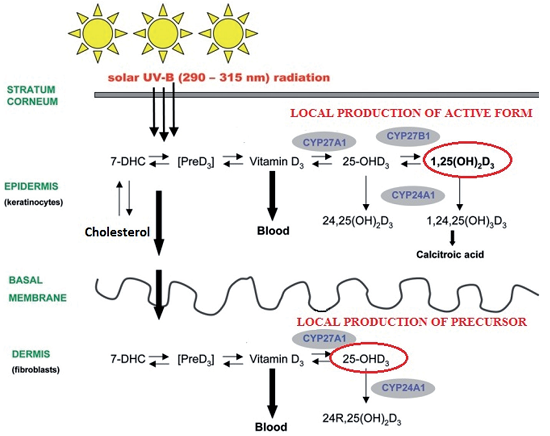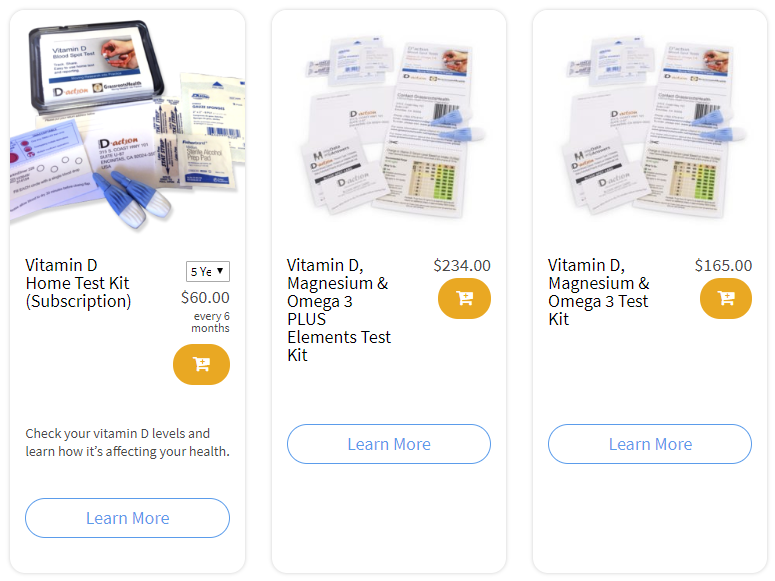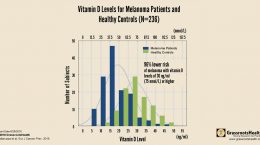Published on May 4, 2020
 May is Sunshine Month, and during this month we will be providing important information on how to fully reap the health benefits from the sun through proper, safe exposure. While many may avoid the sun for fear of skin cancer or skin damage, we are here to ease the fear and share how to get the most from the sun for your health, without the negative consequences that may occur from over-exposure.
May is Sunshine Month, and during this month we will be providing important information on how to fully reap the health benefits from the sun through proper, safe exposure. While many may avoid the sun for fear of skin cancer or skin damage, we are here to ease the fear and share how to get the most from the sun for your health, without the negative consequences that may occur from over-exposure.
Healthy sun exposure is necessary for all!
Vitamin D produced in the skin also helps protect the skin
Unlike traditional vitamins that you must get from your diet or supplements, vitamin D can be produced naturally in your skin. When exposed to UVB rays, and in the proper circumstances (which we will cover tomorrow), your body has the ability to make vitamin D.
Studies have shown that vitamin D produced in the skin can decrease DNA damage in the skin cells and facilitate DNA repair directly upon any UV damage, and help prevent cell death. Furthermore, sensible exposure to sunlight actually protects the skin and deeper tissues from UV damage by increasing pigmentation (short term tanning) and thickening the outermost layer of skin – a process beneficial even for those with already darker skin.
Moreover, keratinocytes, which make up over 90% of the outermost layer of skin, cannot rely on vitamin D3 from supplements. Keratinocytes must synthesize their own supply of vitamin D directly from sun exposure, or by topical application as described in a review by Bolerazska et al. (2017) – so make sure you feed your keratinocytes vitamin D from the sun or topical application!
The vitamin D made in the skin can also help protect from melanoma, a serious form of skin cancer. Research shows that people who have a vitamin D level of at least 30 ng/ml (75 nmol/L) have a 96% reduced risk of melanoma as evidenced by a case-control study by Cattaruzza et al. (2018):
“These results suggest that both deficient and insufficient serum levels of vitamin D are associated with melanoma and that a trend seems to be present with a reduced risk of melanoma when vitamin D approaches normal values.”
Sunlight induces production of other beneficial chemicals in the body
Beyond vitamin D production, another of the many benefits of sun exposure is the release of nitric oxide when the skin is exposed to the sun’s UVA rays. Nitric oxide is beneficial for heart health by acting to increase blood flow and lower blood pressure. Additionally, nitric oxide plays a key role in immunity, cellular function, neurotransmission, and has antimicrobial and anticancer effects.
Sunlight exposure also results in the production of serotonin and beta-endorphins, which promote mood enhancement and relaxation, relieve pain, and boost immunity. Daytime sunlight exposure also helps guide your internal clock, or circadian rhythm, by increasing melatonin levels at night which promotes sleep and allows your body enough time to rejuvenate. Disruptions to circadian rhythm have been shown to increase the risk of cancer, heart disease, and metabolic conditions.
Vitamin D from sunlight bypasses the digestive system
Taking vitamin D supplements orally relies on your digestive system for absorption and distribution throughout your body. People with absorption issues or malabsorption, such as individuals with Crohn’s disease, colitis, and other diseases of the digestive tract, may have difficulty increasing vitamin D blood levels through supplementation alone. These individuals especially may find UVB exposure useful for boosting their vitamin D levels into their target range, beyond what supplementation alone can provide.
Supplements do not provide everything that the sun does for our body’s health
The above information provides just a glimpse at the complex relationship between our bodies and the sun, and how we rely on the sun for many health benefits. However, for most people sun exposure alone is not enough to achieve the target range for vitamin D of 40-60 ng/ml. Vitamin D3 supplements are a good secondary source of vitamin D when direct sunlight isn’t available or not strong enough to make sufficient vitamin D.
Remember, the UVA and UVB rays emitted from the sun have a myriad of health benefits, ranging from vitamin D production to nitric oxide production to regulating our sleep-wake cycles, and can even help protect us from melanoma through the direct synthesis of vitamin D3 within the skin cells. Stay tuned for more information on how the sun can benefit your health.
Are You Getting Enough Vitamin D to Help Yourself?
We’re in a time of great crisis that could be greatly affected by making sure you and everyone you know has a serum level of at least 40 ng/ml. Help us help you.
Do you know what your vitamin D level is? Be sure to test today to find out, and take steps to keep it within a target of 40-60 ng/ml or 100-150 nmol/L! Give your immune system the nutrients it needs to support a healthy you and protect yourself from unnecessary diseases.
GrassrootsHealth is moving forward by using science to drive global action, with using either clinical trials with our key researchers or by doing community Field Trials with individuals or other organizations. Please let us know if you are interested and how we can quickly setup your projects.
Through GrassrootsHealth Nutrient Research Institute, you can also test your essential elements magnesium, copper, zinc and selenium, toxins such as lead, mercury and cadmium, as well as your omega-3 levels, inflammation levels and thyroid stimulating hormone (TSH) level. Find out your levels today! Log on to the test selection page (click the link below) to get your tests and see for yourself if your levels can be improved.
Make sure you track your results before and after, about every 6 months!
Click Here to Access the Test Page
How can I track my nutrient intake and levels over time?
To help you track your supplement use and nutrient levels, GrassrootsHealth has created the Personal Health Nutrient Decision System called
For each specific supplement, you can track what days you take it, how much, and many other details. This will help you know your true supplemental intake and what patterns of use work for you to reach and maintain optimum nutrient levels. Check it out today!









